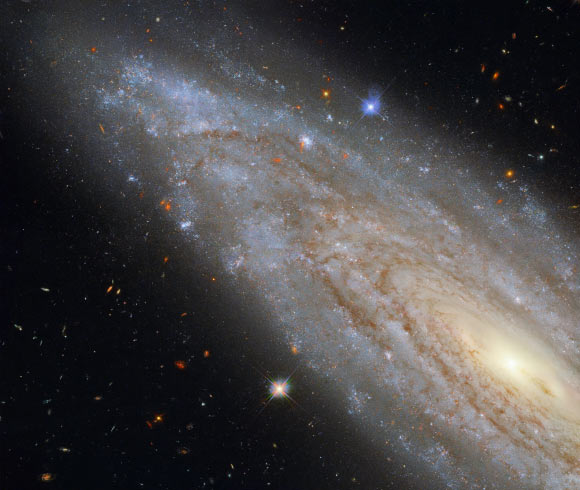
Hubble Space Telescope Looks at NGC 3254 | Astronomy
Astronomers using the NASA/ESA Hubble Space Telescope have taken a detailed image of a spectacular part of the spiral galaxy NGC 3254.This Hubble image shows NGC 3254, a spiral galaxy located some 118 million light-years away in the constellation of Leo Minor. The color image was made from separate exposures taken in the visible and infrared regions of the spectrum with Hubbles Wide Field Camera 3 (WFC3). Four filters were used to sample various wavelengths. The color results from assigning different hues to each monochromatic image associated with an individual filter. Image credit: NASA / ESA / Hubble / Riess et al.NGC 3254 lies approximately 118 million light-years away in the constellation of Leo Minor.Otherwise known as IRAS 10265+2944, LEDA 30895 and UGC 5685, the galaxy was discovered by the German-born British astronomer William Herschel on March 13, 1785.It belongs to the NGC 3254 galaxy group, which also includes NGC 3245, NGC 3265, and other galaxies.In the new image, NGC 3254 looks like a typical spiral galaxy, viewed side-on, Hubble astronomers said.However, NGC 3254 has a fascinating secret that it is hiding in plain sight — it is a Seyfert galaxy, meaning that it has an extraordinarily active core, known as an active galactic nucleus, which releases as much energy as the rest of the galaxy put together.Seyfert galaxies are not rare — about 10% of all galaxies are thought to be Seyfert galaxies, the researchers explained.They belong to the class of active galaxies — galaxies that have supermassive black holes at their centers that are actively accreting material, which releases vast amounts of radiation as it is accreted.There is a second, far more active, type of active galaxy that is known as a quasar.The active cores of Seyfert galaxies, such as that of NGC 3254, are brightest when observed in light outside the visible spectrum.At other wavelengths, this image would look very different, with the galaxys core shining extremely brightly.
……
Comments
Leave a comment in Nestia App